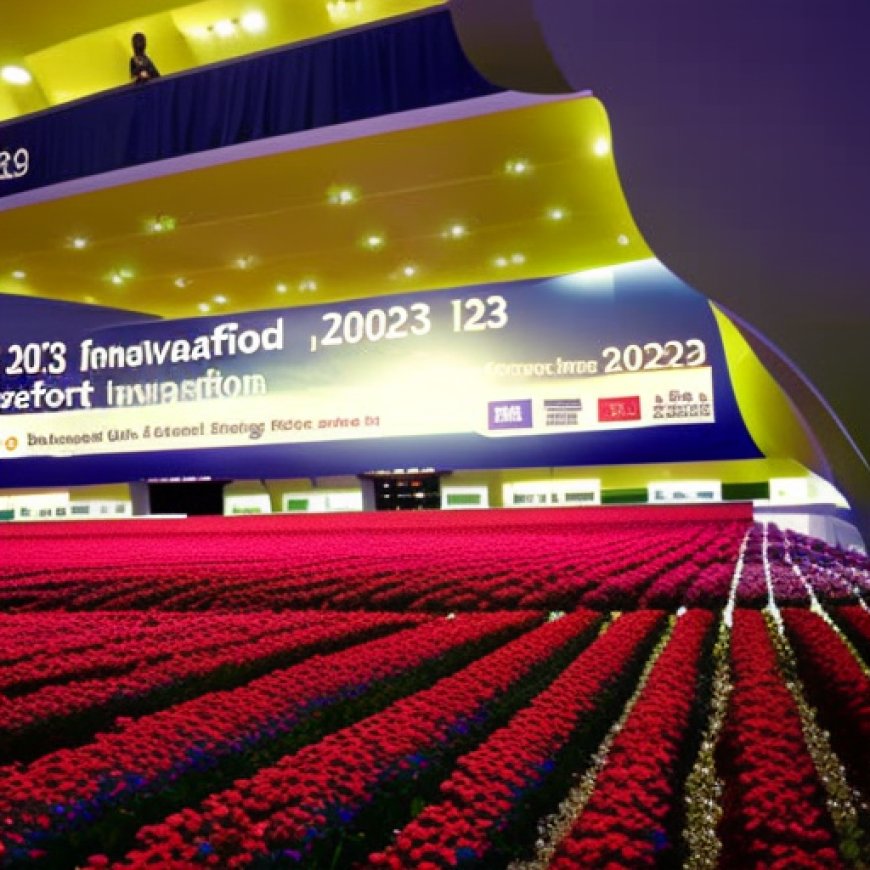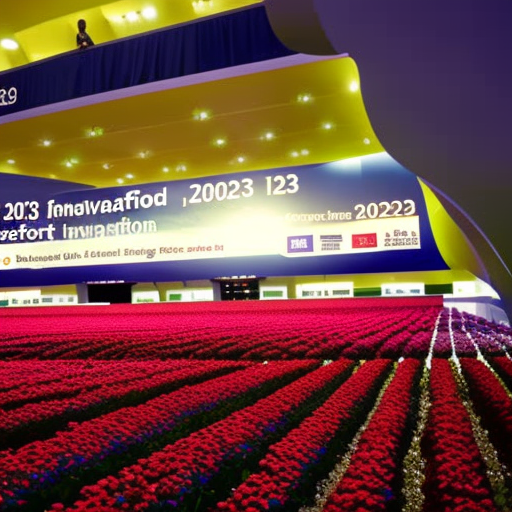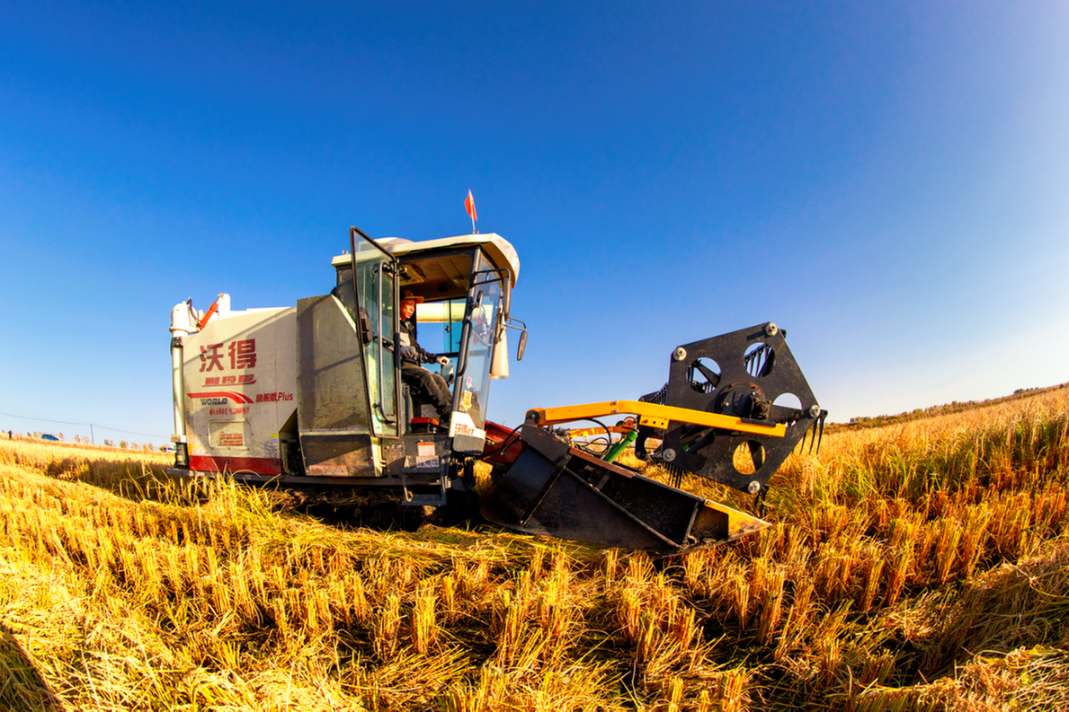2023 World Agrifood Innovation Conference opens in Beijing
2023 World Agrifood Innovation Conference opens in Beijing ... China Daily


The 2023 World Agrifood Innovation Conference

The 2023 World Agrifood Innovation Conference opened on Friday in Pinggu district in Beijing. Over 800 scientists, entrepreneurs, and professionals from countries such as the Netherlands, the United Kingdom, the United States, Vietnam, and Thailand engaged in in-depth exchanges.
Food Security and Sustainable Development Goals
In his opening speech, Secretary of the Beijing Municipal Party Committee, Yin Li, emphasized the importance of food security as a fundamental issue concerning human survival. He highlighted China’s role in contributing to global food security despite having less than 9 percent of the world’s arable land and sustaining nearly one-fifth of the global population. Yin Li stated that China is promoting a Chinese-style modernization and accelerating the construction of an agricultural powerhouse. Beijing, as the capital of China, aims to leverage its technological, educational, and talent advantages to create a highland for agricultural technology innovation.
Beijing’s Commitment to Technological Innovation
Yin Li announced that Beijing will continue to optimize the capital’s environment for technological innovation and integrate into the global agricultural technology innovation network. The city will strengthen the position of enterprises as the mainstay of innovation and support well-known domestic and foreign agricultural technology companies, as well as global agricultural technology innovation talents, to expand and develop in Beijing.
Chinese Government’s Focus on Agricultural Technological Innovation
Tang Renjian, secretary of the Party Group and minister of Agriculture and Rural Affairs, emphasized that the Chinese government has always attached great importance to agricultural technological innovation. They have implemented the strategy of innovation-driven development to build an agricultural powerhouse. The government aims to promote self-reliance and self-sufficiency in agricultural science and technology, providing solid and strong technological support for stable production and supply. They are also accelerating the promotion and application of technologies for sustainable agricultural development and making progress in the research and development of basic technologies.
Promoting Sustainable Agricultural Development
Tang Renjian highlighted that a new round of agricultural technological revolution characterized by biotechnology and information technology is incubating major breakthroughs. He called for concerted action from all sides to safeguard food security and promote sustainable agricultural development with more efficient, greener, and smarter agricultural technologies.
Theme of the 2023 WAFI
The theme of the 2023 World Agrifood Innovation Conference is “Food Security and Future Agriculture.” Experts such as QU Dongyu, director-general of the Food and Agriculture Organization of the United Nations, and Kenneth Quinn, honorary chairman of the World Food Prize Foundation, delivered speeches during the conference. They encouraged all parties to share the latest achievements, promote cooperation and transformation of industry, academia, and research, and cultivate new driving forces for global agricultural development.
SDGs, Targets, and Indicators
| SDGs | Targets | Indicators |
|---|---|---|
| SDG 2: Zero Hunger | 2.1 By 2030, end hunger and ensure access by all people, in particular the poor and people in vulnerable situations, including infants, to safe, nutritious and sufficient food all year round | – Percentage of population experiencing hunger or food insecurity – Percentage of population with access to safe, nutritious, and sufficient food |
| SDG 9: Industry, Innovation, and Infrastructure | 9.5 Enhance scientific research, upgrade the technological capabilities of industrial sectors in all countries, in particular developing countries, including, by 2030, encouraging innovation and substantially increasing the number of research and development workers per 1 million people and public and private research and development spending | – Number of research and development workers per 1 million people – Public and private research and development spending |
| SDG 12: Responsible Consumption and Production | 12.3 By 2030, halve per capita global food waste at the retail and consumer levels and reduce food losses along production and supply chains, including post-harvest losses | – Amount of food waste at the retail and consumer levels – Food losses along production and supply chains |
Analysis
1. Which SDGs are addressed or connected to the issues highlighted in the article?
The SDGs addressed or connected to the issues highlighted in the article are:
- SDG 2: Zero Hunger
- SDG 9: Industry, Innovation, and Infrastructure
- SDG 12: Responsible Consumption and Production
2. What specific targets under those SDGs can be identified based on the article’s content?
The specific targets under the identified SDGs are:
- Target 2.1: By 2030, end hunger and ensure access by all people, in particular the poor and people in vulnerable situations, including infants, to safe, nutritious and sufficient food all year round.
- Target 9.5: Enhance scientific research, upgrade the technological capabilities of industrial sectors in all countries, in particular developing countries, including, by 2030, encouraging innovation and substantially increasing the number of research and development workers per 1 million people and public and private research and development spending.
- Target 12.3: By 2030, halve per capita global food waste at the retail and consumer levels and reduce food losses along production and supply chains, including post-harvest losses.
3. Are there any indicators mentioned or implied in the article that can be used to measure progress towards the identified targets?
Yes, there are indicators mentioned or implied in the article that can be used to measure progress towards the identified targets:
- Percentage of population experiencing hunger or food insecurity
- Percentage of population with access to safe, nutritious, and sufficient food
- Number of research and development workers per 1 million people
- Public and private research and development spending
- Amount of food waste at the retail and consumer levels
- Food losses along production and supply chains
4. SDGs, Targets, and Indicators
| SDGs | Targets | Indicators |
|---|---|---|
| SDG 2: Zero Hunger | 2.1 By 2030, end hunger and ensure access by all people, in particular the poor and people in vulnerable situations, including infants, to safe, nutritious and sufficient food all year round | – Percentage of population experiencing hunger or food insecurity – Percentage of population with access to safe, nutritious, and sufficient food |
| SDG 9: Industry, Innovation, and Infrastructure | 9.5 Enhance scientific research, upgrade the technological capabilities of industrial sectors in all countries, in particular developing countries, including, by 2030, encouraging innovation and substantially increasing the number of research and development workers per 1 million people and public and private research and development spending | – Number of research and development workers per 1 million people – Public and private research and development spending |
| SDG 12: Responsible Consumption and Production | 12.3 By 2030, halve per capita global food waste at the retail and consumer levels and reduce food losses along production and supply chains, including post-harvest losses | – Amount of food waste at the retail and consumer levels – Food losses along production and supply chains |
Behold! This splendid article springs forth from the wellspring of knowledge, shaped by a wondrous proprietary AI technology that delved into a vast ocean of data, illuminating the path towards the Sustainable Development Goals. Remember that all rights are reserved by SDG Investors LLC, empowering us to champion progress together.
Source: chinadaily.com.cn

Join us, as fellow seekers of change, on a transformative journey at https://sdgtalks.ai/welcome, where you can become a member and actively contribute to shaping a brighter future.







